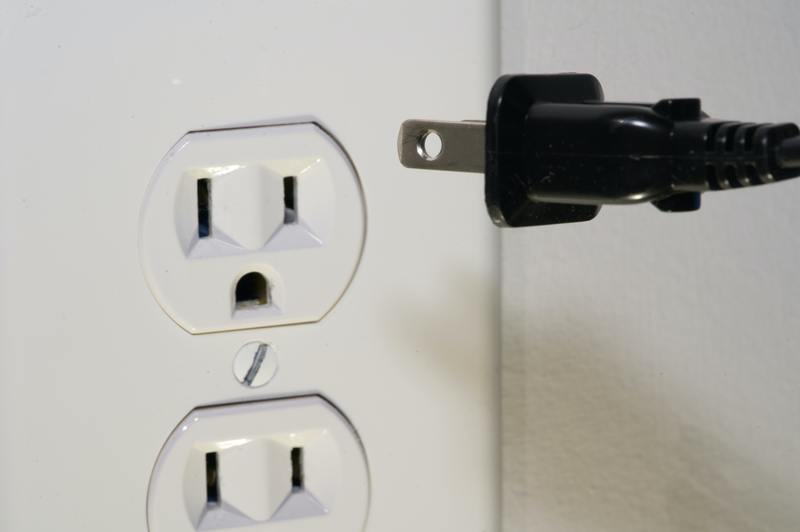Everyone knows that mixing water with electricity can be very dangerous, and you might end up thinking about how to fix water damaged plug. Dealing with the danger of water coming into touch with electricity is a serious concern while addressing flooding.
Water seeping into an electrical outlet is a common cause of flooding, and spillage can occur even when a drink is poured next to an outlet. You must understand what occurs when water enters an electrical outlet and when it does since it’s harmful to water to meet electricity.

What Happens If Water Gets In Electrical Outlet?
Any time water goes into an electrical outlet, there is a degree of risk until the water is entirely gone. Water can help electricity conduct.
You may experience a significant electric shock if you ever touch one of these outlets while it is filled with water. Burns are most often the consequence of being shocked by electricity.
In addition, it is a common occurrence to have some measure of pain following electrical exposure. While getting shocked by an outlet is unpleasant, the more significant issue occurs when you plug something into the outlet with moisture.
Short circuits are hazardous, which may melt wires and cause electrical outlets to overload or even fire. When water leaks into electrical outlets, it can quickly catch fire. Your property would suffer significant damage if these flames are allowed to continue, so you should shut down your power immediately.
What are the common uses of water damaged plugs?
You should notice when water gets into an electrical outlet so that you may clean the outlet and prevent any complications. While uncommon, water will sometimes find its way to ground-level outlets like toilets and sinks.
Because water can enter a house via several avenues, it is not difficult to get into a plug for electrical equipment. After a storm that causes flooding, you should be cautious to examine all exposed electrical outlets in the basement and ground-floor windows.
More leaks, such as ones found in the roof, are common. If water drips from your ceiling, it can pour onto your electrical outlets. Leaks of this size will impact your roof, but in the event of a severe leak, water could seep into other portions of your home.
Similarly, leaks that occur around the edges of a room may seep down your wall, so your wall sockets are at risk of being damaged. Moreover, burst pipes can also create leaks. Burst pipes in your crawl area can leak into outlets in the wall on the same side.
How To Repair A Water Damaged Plug
Once your home’s wiring becomes wet, make sure to expedite the drying of outlets. Using a multimeter is preferred, but avoid electrocuting yourself because you don’t want to mess around with an outlet when you don’t know what to do.
Step #1. Check your outlets and turn them off
You must cut the electrical connection to the outlet once water enters. It is something you could do, but it may not be required.
If you’re concerned about it, you could hit the reset and test buttons on the GFCI together to power it off manually. You’ll find these buttons right on the outlet itself.
Step #2. Shut all powers in the fuse box
Even if you’ve been shutting off your GFCI outlets every time you use them, consider shutting off the breaker box to ensure that you can dry your outlets with no fears about electric shock. You will need to identify which breaker to turn off by flipping them all to the off position or by turning each of them off one by one until you find the suitable breaker.
Step #3. Dry the plug
After you’ve reached the last stage of this procedure, you must comprehend the extreme necessity of not touching a damp outlet. It might take you by surprise, which will be uncomfortable.
The water damage may dry overnight if it’s not too severe. Or, if you have one, you might use a blow dryer to accelerate the drying time. If there’s plenty of water in the outlet and it’s taking forever to dry it, call an electrician to get it repaired or replaced.
Step #4. Replace if needed
Even if you’re very confident that it’s dry, never attempt to fix or use your electrical outlet unless you have finished drying it out. If you can do it, testing your outlet using a voltage meter is ideal to avoid dangerous shocks.
It is generally preferable to replace your outlet when there is significant water damage. Because of the rules regulating electrical installations, it must be performed by a professional who is licensed. It is unsafe to try and repair or reuse a damp electrical outlet.
Conclusion
It is essential to take prompt measures to know how to fix water damaged plug to immediately remedy or replace the problem outlet to avoid such potential dangers. If you’re not able to complete the task independently, you must be sure to get professional help. This article will help you avoid future problems.
